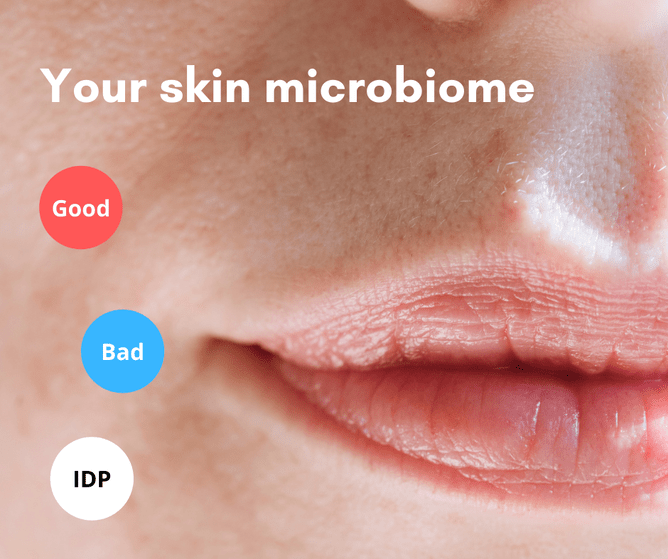We bet you’ve often wondered what is really happening on your skin; what’s not able to be seen without a microscope, causing skin issues ranging from redness and general irritation to full-blown acne breakouts.
Well science knows the answer: it’s all in your skin microbiome (pronounced micro-bi-ohm), the collection of bacteria that exists on, in and around your skin.
Most people are now familiar with the term gut microbiome, thanks to the proliferation of probiotics and prebiotics on the market to balance your gut flora. Your skin microbiome is the same idea; your skin is covered in bacteria that are essential to existence, and are generally not harmful.
Of course, you do want the good bacteria to predominate over the bad bacteria. Let’s go deeper into the skin microbiome to discover what this means, and what you can do to balance your bacteria.
Skin microbiome: your living ecosystem
It might feel a bit strange to think of an ecosystem living on your face, but we promise it’s a good thing! To make you feel special: your skin microbiome is unique to you, partly formed at birth but then continuously altered over your lifetime based on your age, environment, weather and season, food you eat and objects you come into contact with.
As part of your microbiome, you’ll have both good and bad bacteria and what you want is for the good bacteria to manage the bad bacteria. They do this by creating bacteriocins which can kill the bad bacteria.
Our active ingredient IDP® works into this process through what we call the 1 + 1 = 3 equation (yes, we know that’s not mathematically correct!). The bacteriocins from the good bacteria kill the bad bacteria, and IDP® also kills the bad bacteria (but not the good). So when you add them together, IDP® protects the good bugs at the same time, allowing them to be even more effective, giving you an added benefit – hence the 3.
By applying IDP®, you’re balancing your natural defense system and supporting your native microbiome.
The good, the bad and the acne
So how does acne work in the context of these good and bad bacteria? We know that oil secretion is a key contributor to acne, as excess oil can block your pores. This creates a lovely environment from the perspective of the bad, pathogenic bacteria, which become trapped and cause the infections and inflammation that characterise an acne breakout.
You want your good bacteria and their bacteriocins to jump in before this point and save the day. By feeding IDP® to your skin microbiome through Epiology, you’re promoting the good bacteria and minimising the bad, tipping the balance towards healthier skin.
Essentially, good health is all about having a healthy, balanced microbiome, because that’s the natural way of your body co-existing with nature.
Thinking about your skincare routine
When you apply this bacterial knowledge to your regular three step Epiology skincare routine, the role of the Anti-Acne Foaming Cleanser is to clear away the oil (as well as other dirt and impurities), reducing the available habitat for that bad bacteria to flourish.
By following this up with the Advanced Anti-Acne Cream, you then nourish the good bacteria and allow them to populate preferentially over any nasties. Keeping the skin moisturised also reduces the likelihood of it drying out, creating pockets for bad bacteria to grow. Think of your skin like a plant – you know what happens when you don’t keep plants watered!
The Extra-Strength Spot Gel works in a similar way to the cream, but in a more localised way on the spot(s) you apply it on and in a higher concentration.
We intentionally formulated each Epiology product with minimal ingredients, keeping it simple and only including what we know not to be irritating and harmful.
With Epiology, our aim is to provide a natural solution to rebalancing and restoring your skin microbiome.


